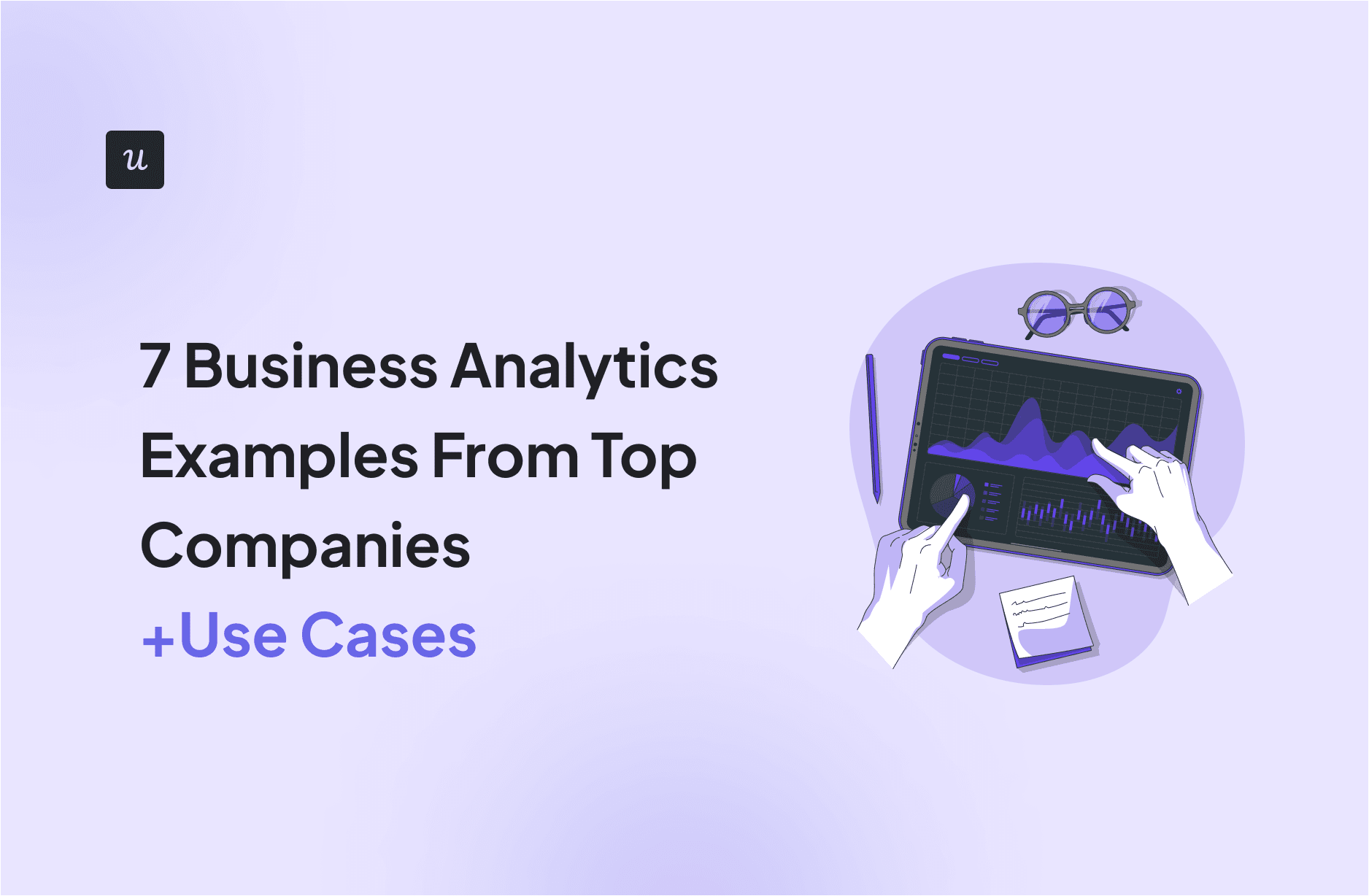
Data-driven companies are 58% more likely to hit revenue goals. This shows how important business analytics is for your product.
Business analytics gives insights that help you make better decisions to improve your product. This article will show seven examples of business analytics to highlight its positive impact.
How do you currently leverage business analytics to understand your customers?
Try Userpilot Now
See Why 1,000+ Teams Choose Userpilot

What are business analytics?
Business analytics is the use of data to make better business decisions. It involves gathering and examining data to find trends and patterns that can improve a company’s performance.
With user behavior tracking, businesses can learn about what their customers like and how they behave. This approach helps companies make smart decisions, improve how they work, and get better results.
Why is it important to track customer behavior analytics?
Tracking customer behavior analytics is essential for business analytics for several reasons:
- Optimize marketing campaigns based on customer preferences: By understanding what your customers like and dislike, you can tailor your marketing campaigns to match their interests. This makes your marketing efforts more effective and engaging, leading to better results.
- Identify friction points: Analyzing user behavior can help you spot areas where customers face difficulties. Addressing these issues can make the user experience smoother and more enjoyable.
- Increase customer satisfaction and loyalty: Using data to understand and meet your customers’ needs makes them happier and more likely to stick with your brand. Satisfied customers are more loyal and can become advocates for your business.
What are the four types of business analytics?
Business analytics can be divided into four main types. Each serves a unique purpose in helping you analyze data to improve performance.
A business analyst plays a role in leveraging these analytics to drive success:
- Descriptive analytics: This type of analytics examines historical data to understand past trends and performance. By analyzing key performance indicators (KPIs), business analysts can identify patterns that inform future strategies. Descriptive analytics helps you make sense of past events for future planning and decision-making.
- Diagnostic analytics: This type of analytics investigates the reasons behind past outcomes. By drilling into the data, business analysts can uncover the root causes of specific results to understand why certain things happened. Diagnostic analytics provides deeper insights into the factors that influenced past performance.
- Predictive analytics: Predictive analytics: This type uses models to forecast future trends and behaviors. Using machine learning and historical data, predictive analytics can help businesses predict future events. This allows them to prepare and plan.
- Prescriptive analytics: This type provides recommendations for decision-making to achieve desired outcomes. By analyzing raw data and predicting future trends, prescriptive analytics offers actionable advice on the best steps to meet business goals. Business analysts use these recommendations to guide organizations in making informed decisions.
How to leverage customer data for actionable insights?
Understanding how to use customer data can change your business. Use this data through analytics to find valuable insights. These insights drive key decisions and improve customer experiences. Here’s how to turn customer data into useful insights.
Create personalized experiences for different segments
To create personalized experiences, segment your customers by different factors. These can include age, gender, and product usage. Using business analytics, gain deeper insights into these segments.
By understanding these segments, you can send personalized messages. Tailor suggestions and offers to each group’s needs. This focused approach improves customer experience. It helps boost satisfaction and retention.
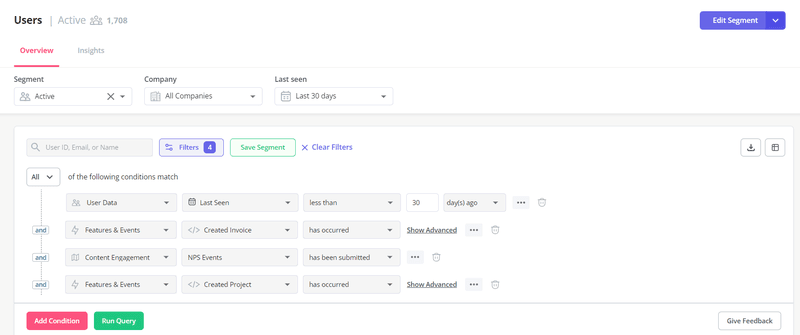
Segmenting users in Userpilot.
Identify the shortest path to value to help users achieve future outcomes
Mapping the user journey is key to finding important touchpoints. Use path analysis to improve the user experience. Understand these critical moments with business analytics.
Remove friction points and streamline the path to value. Ensure users reach their goals more efficiently. Focus on these improvements to boost the customer experience. This will drive better results for your business.
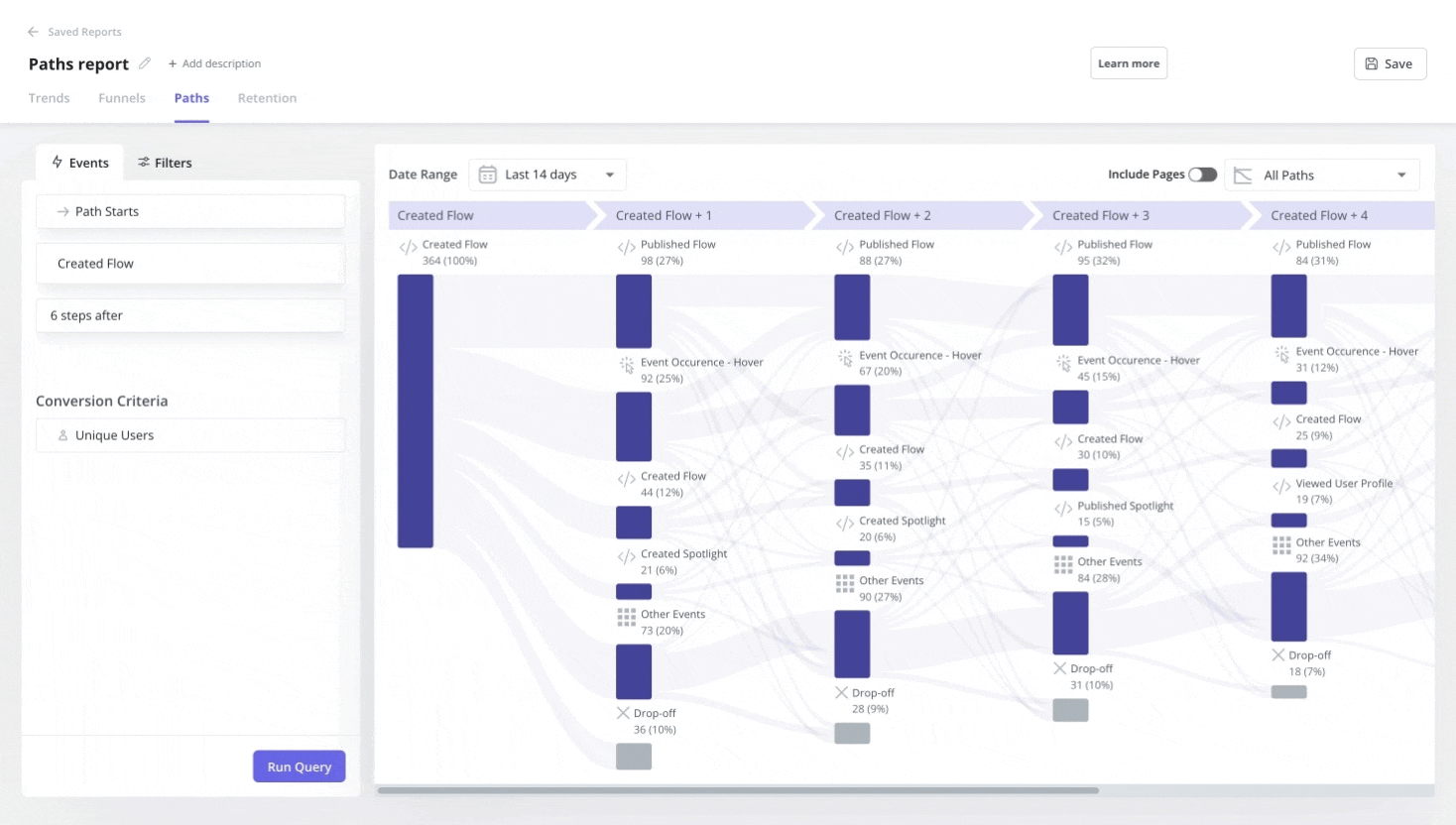
Improve product usability for a better user experience
To improve product use and enhance the user experience, start by using business analytics to find and fix problems.
Spot these issues through funnel analysis drop-offs. This shows where users leave a process or feature. Use session recordings (coming soon in Userpilot) to see where users have trouble.
By knowing where and why users struggle, you can make targeted fixes. This ensures a smoother and more satisfying user experience. This proactive approach helps keep users and boosts overall happiness.
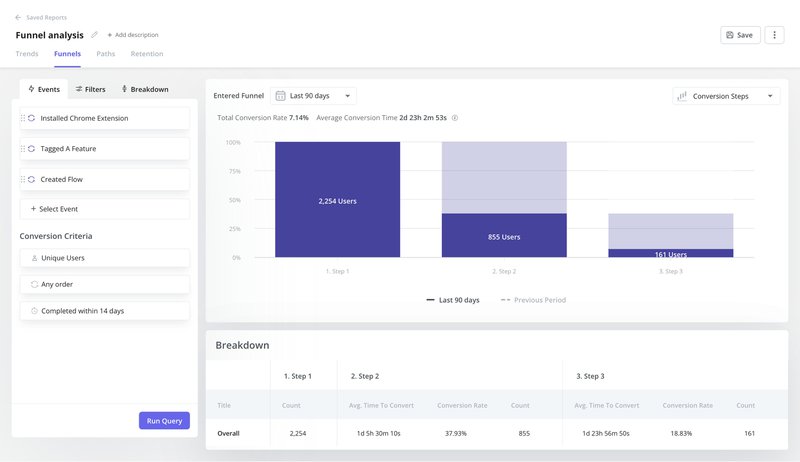
Identify the right opportunities for upselling
To find upselling chances, analyze customer usage with business analytics. This helps you pinpoint:
- The right segments to upsell: Find which customer groups are most engaged. Target these users with tailored upsell messages. Segments might include frequent users or those using certain features a lot.
- The right features to upsell: See which features are popular. Offer upgrades or extra features that match their usage. Users of a particular feature might want an upgraded version or added functionality.
- The right time to upsell: Timing is key. Look at when users are most active or reach app milestones. After using a feature often or completing a task, they might welcome an upsell offer for better capabilities or more services.
By analyzing these patterns with business analytics, you can create effective upsell campaigns. This increases revenue and customer satisfaction.
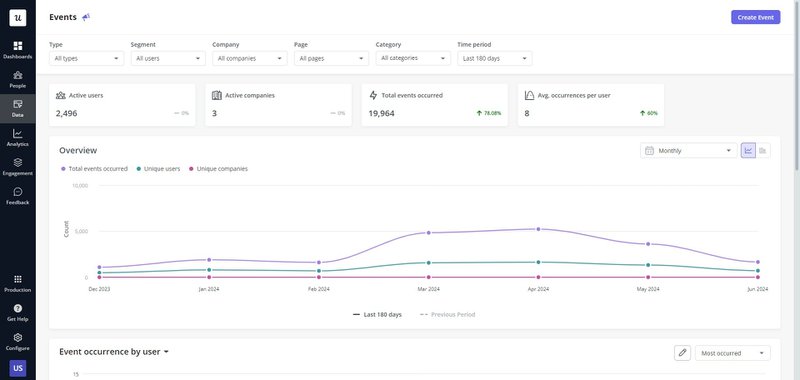
Predict customer churn to increase retention
Creating predictive models using user behavior data can help forecast churn. Use business analytics to find patterns showing a customer might leave.
To manage these insights, create a churn prevention dashboard. This tool helps you monitor churn levels and act quickly. By fixing issues that lead to churn, you can improve retention rates. This keeps your customers happy and engaged.
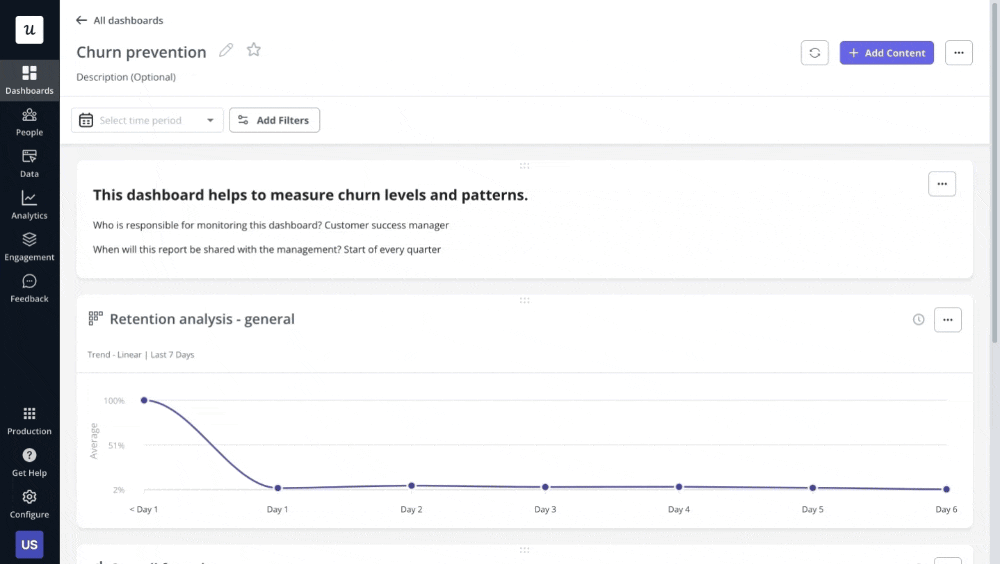
7 business analytics examples from leading companies
This section will explore how top companies use business analytics to succeed. These examples will show how businesses use data to improve operations, enhance customer experiences, and boost performance.
1. Cuvama
Cuvama successfully used business intelligence, data analytics, and Userpilot. They used path analysis to find an error message affecting certain users. By accessing profile information through Userpilot, they could click on names in the paths report and contact those users directly to resolve the error.
Leyre Iniguez, Customer Experience Lead at Cuvama, praised the user profile feature: “I love this. I can come here and see who my user is having those problems, so I can directly contact the person and check out what’s happening.” This proactive approach allowed Cuvama to enhance its customer experience significantly.
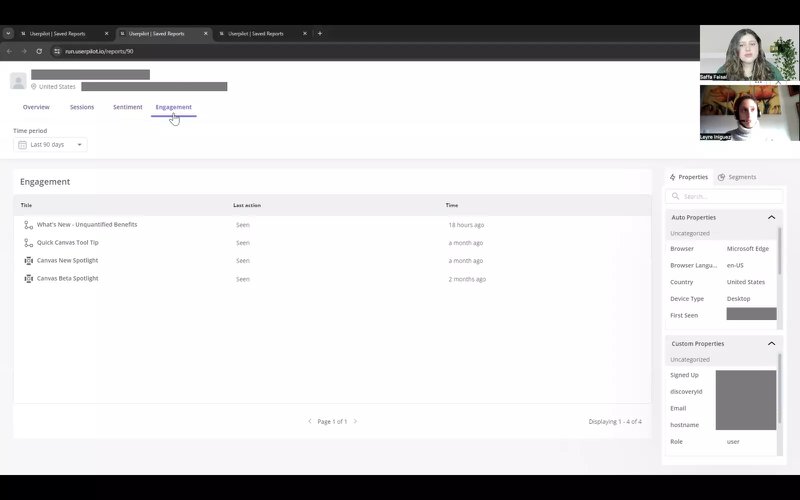
2. ClearCalcs
ClearCalcs, a structural design software, significantly improved user activation rates using Userpilot. They identified customers delaying activation by using business analytics and cohort analysis. This analysis helped them understand user behavior and address specific needs.
Using Userpilot, ClearCalcs implemented personalized onboarding flows. This played a crucial role in improving user activation and delivering value faster. These tailored onboarding experiences ensured new users quickly found and used the calculators they needed, enhancing their initial interaction with the product.
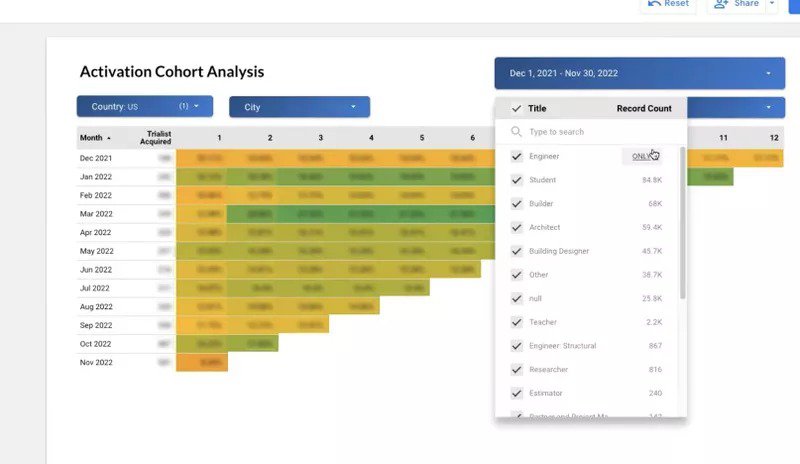
3. RecruitNow
RecruitNow used Userpilot to train its growing customer base effectively. They used business analytics and Userpilot to create an onboarding survey to monitor their onboarding flow.
RecruitNow tracked survey completions, satisfaction levels, and customer feedback through survey analytics. This data-driven approach allowed them to improve their training process and ensure high customer satisfaction.
Using these insights, RecruitNow saved over 1,000 hours in customer training. This made their onboarding process more efficient and impactful.
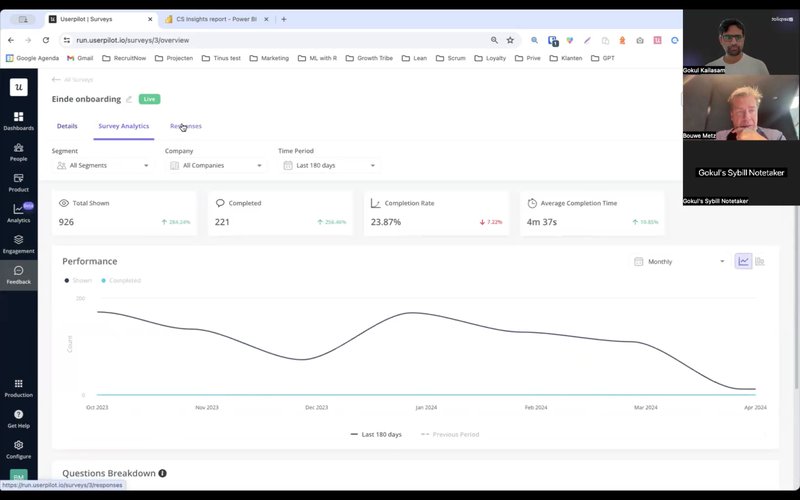
4. DocuSign
DocuSign, a leading e-signature platform, aimed to boost its freemium-to-paid conversion rates. They used business and data analytics to give free users access to select premium features.
Using funnel analytics, they identified which features would drive upgrades. This strategy resulted in a 5% improvement in conversions, a significant increase given their 130,000 new users daily. By leveraging data insights, DocuSign successfully enhanced its conversion rates and overall user experience.
5. Netflix
With nearly 270 million subscribers, Netflix is the world’s largest streaming service, boasting a 93% retention rate. This success is driven by using business analytics and personalization.
Netflix analyzes viewing patterns, including what users watch, when, and for how long. These insights allow them to offer personalized recommendations, AI-generated trailers, and develop original content that matches their audience’s tastes.
This data-driven approach boosts retention and helps Netflix compete with traditional media giants, as shown by their Golden Globe and Oscars wins.
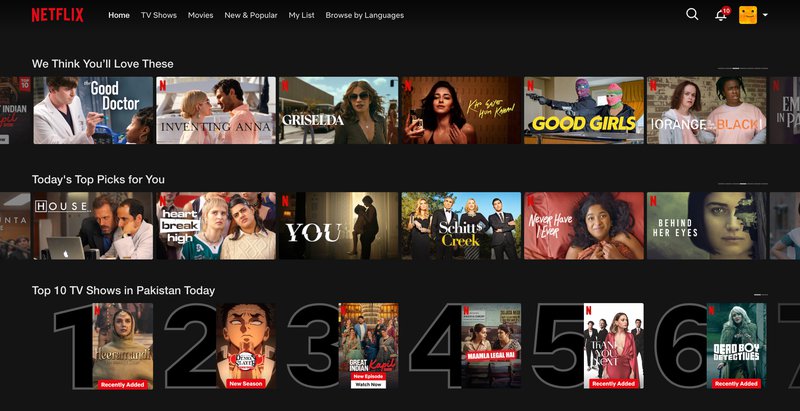
6. Amazon
Amazon, the largest e-commerce business, attributes 35% of its sales to personalized recommendations. By analyzing user behavior—such as viewed items, added to the cart, or purchases—they create tailored suggestions for each user.
Amazon also uses dynamic pricing, adjusting prices up to 2.5 million times daily based on shopping patterns, competitor prices, and product demand. This use of big data and analysis enhances the customer experience and drives significant sales, demonstrating Amazon’s effective data-driven strategies to maintain its market leadership.
7. Uber Eats
Uber Eats used its extensive data from the taxi business to excel in the competitive food delivery market. To ensure timely and warm deliveries, Uber Eats used business analytics and natural language processing to model the physical world and predict delivery times accurately.
They collected data on meal preparation times to coordinate precise pick-ups, allowing drivers to deliver multiple orders efficiently per trip with incentives. Their innovative approach includes employing meteorologists to anticipate weather impacts. Uber Eats shows how Big Data and analysis can expand services, gain a competitive edge, and predict customer needs.
Conclusion
It’s clear that data is crucial for all types of business analytics and can produce fantastic results for your business. With business analytics, you understand how your product is performing.
Getting started with business analytics can be daunting, but Userpilot makes it easy. Userpilot helps you segment users to create personalized experiences, measure in-app engagement, and understand product usage to improve the customer experience. For examples of business analytics in action, Userpilot can show you how it works. If you want to know more, book a demo now.







